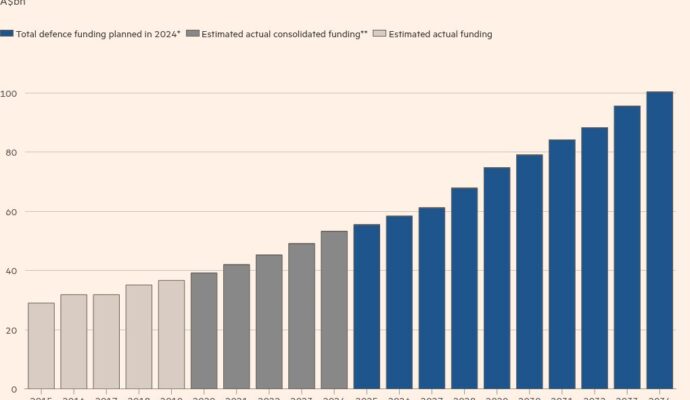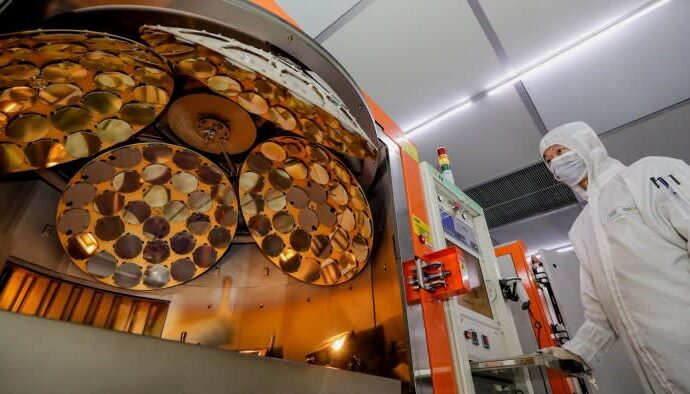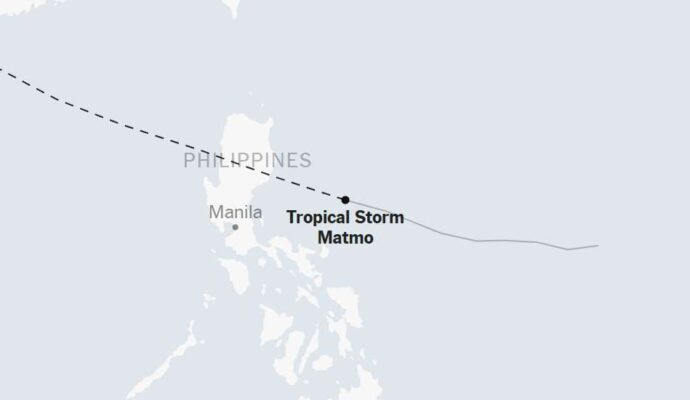Stay informed with free updates
Simply sign up to the Aerospace & Defence myFT Digest — delivered directly to your inbox.
Mitsubishi Heavy Industries has been selected as the preferred bidder to build a new fleet of Australian frigates, beating German rival Thyssenkrupp in a significant win for Japan’s defence industry.
The order to build up to 11 frigates is worth as much as A$10bn ($6.5bn) in its first phase. It will be Japan’s first deal to export warships, some of which will be built in Australia with a partner.
A formal contract will be concluded in 2026, according to the Australian and Japanese governments.
The general purpose frigate order is part of a major overhaul of Australia’s defence capability against a backdrop of increased tension in the Indo-Pacific region. The overhaul includes the Aukus agreement with the US and UK to deliver nuclear-powered submarines to Australia as well as the construction of Hunter-class frigates in Adelaide.
Australia said last year that it had selected MHI and Thyssenkrupp as the two final bidders for the order, which was also contested by companies from South Korea and Spain.
Richard Marles, Australia’s defence minister and deputy prime minister, said MHI’s design was selected based on its ability to meet Australia’s needs and reflected the strength of the partnership with Japan.
“It’s a big moment in the relationship between Australia and Japan. We have a strong strategic alignment,” he said.
MHI will supply Australia with an upgraded model of its Mogami frigate. Japan’s largest defence contractor was considered the frontrunner in recent months despite concerns that its vessel was more expensive and that Japanese companies had no experience building warships in other countries.
Pat Conroy, Australia’s minister for defence procurement, said MHI’s bid was “the clear winner” in terms of cost, capability and schedule with the first ship to be delivered by 2029. He said the Japanese proposal was cheaper over the life of the frigate contract as the Mogami design needed fewer crew onboard, was cheaper to arm and had a longer hull life.
The first three ships will be built in Japan but eight will be constructed in Western Australia by Austal, an Australian company. Conroy said a company had been formed under Austal’s ownership to complete the work and that Australia’s government would have a “sovereign preference share”.
The contest between the two frontrunners Japan and Germany had been pitched as a choice to deepen ties with Japan versus a more tried and tested route favoured by Australia’s navy, which has German-designed vessels in its fleet.
Japan has been a bit-part player in the global defence industry because of postwar constraints on arms exports, which were loosened in 2014.
The Mogami contract marks a turning point as a lack of commercial knowledge in forming defence contracts had hamstrung Japanese companies even after Tokyo pivoted to promoting arms exports.
Japan has sold radar equipment to the Philippines but the frigate contract from Australia is only its second deal to export fully assembled defence equipment and the largest ever secured by a Japanese group.
Yoshimasa Hayashi, chief cabinet secretary in Japan’s government, said the choice reflected “a high level of trust in Japan’s technological capabilities” and was “a significant step forward in elevating security co-operation with Australia, our special strategic partner”.
MHI’s shares rose 3.8 per cent on Tuesday to trade at a fresh all-time high.
Exporting arms systems is seen as critical for Japanese defence contractors to enlarge their customer base, expand capacity, develop technologies and bring costs down.


